Another Aspect of Hybrids? Just Imagine…
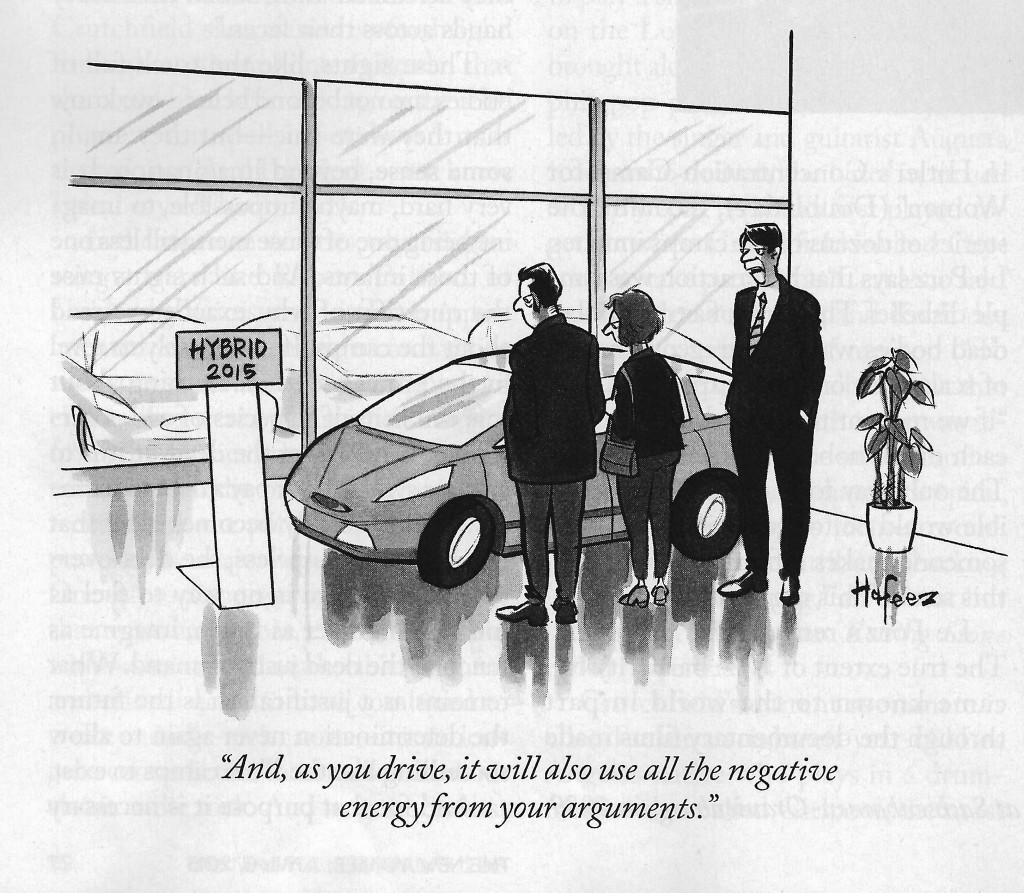 Hah! I blogged on the subject of innovation in powering hybrid automobiles awhile back. The ClimateProgress piece described “the first fully-active advanced suspension system that recovers energy and directs it to charge the battery while the car is moving. The bumpier the road, the more power generated.” This would be a form of “positive energy.” See here if you missed it. (Scroll down a bit ’til you notice the ClimateProgress logo.)
Hah! I blogged on the subject of innovation in powering hybrid automobiles awhile back. The ClimateProgress piece described “the first fully-active advanced suspension system that recovers energy and directs it to charge the battery while the car is moving. The bumpier the road, the more power generated.” This would be a form of “positive energy.” See here if you missed it. (Scroll down a bit ’til you notice the ClimateProgress logo.)
Another term for it is energy harvesting. Imagine harvesting energy from the Bay Bridge or those railroad bridges over the Susquehanna? Or, a bank of turnstiles even? How ’bout one of the world’s tallest buildings, Taipei 101?
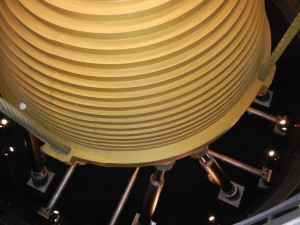

I visited Taipei 101 several years ago when invited by a Taiwan company to co-teach in Taipei a seminar about two LEED rating systems. Following day I became a tourist. Inside the building, from an interior observation deck on the 89th floor, I laid eyes on a massive Tuned Mass Damper (TMD). Here’s an image showing the shock absorbing energy receptors.
The TMD is actually suspended from cables so it can “swing.” With such swing, electricity is harvested to power the building.
When last checked, Taipei 101 is the world’s tallest green building: 508m (1,670 ft.), including the antenna–architectural height–and 101 floors. Certified Platinum under LEED Existing Buildings: Operations & Maintenance in 2011.
A long time ago I remember hearing that each of the World Trade Towers swayed about a foot in a major windstorm. To marvel of engineering design that harnesses the “elasticity” of steel in super-tall buildings? Done on a slide rule back in the day, eh Gordon?
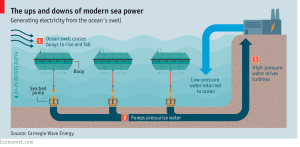 Energy harvested from ocean waves has gotten quite a bit of coverage in the news lately. Saw some in the 3/14 issue of The Economist. It reported on a company called Carnegie Wave Energy, based in Perth, Australia. Carnegie has deployed several of its CETO 5 wave energy harvesters just off the coast of that country’s largest naval base, HMAS Stirling. A small percentage of the electricity and fresh water at the base is “generated” by the wave energy harvested by the CETO 5s.
Energy harvested from ocean waves has gotten quite a bit of coverage in the news lately. Saw some in the 3/14 issue of The Economist. It reported on a company called Carnegie Wave Energy, based in Perth, Australia. Carnegie has deployed several of its CETO 5 wave energy harvesters just off the coast of that country’s largest naval base, HMAS Stirling. A small percentage of the electricity and fresh water at the base is “generated” by the wave energy harvested by the CETO 5s.
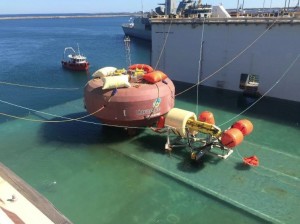
According to the article: “The buoys themselves at 11 metres across, made of steel and filled with a mixture of seawater and foam to give them a density slightly below that of water, so that they float. Being submarine means that, unlike previous attempts to extract power from waves, they are not subject to storms and the constant battering that life at the interface between sea and air brings.
“As [Carnegie’s CEO] observes, savvy swimmers in Australia know to dive under–not through–an approaching wave, to avoid getting smashed. The same applies to buoys.
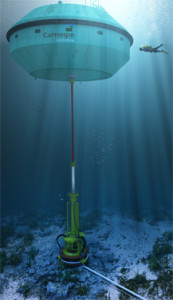 “Each buoy’s rising and falling drives, as the diagram [at the right] shows, a pump attached to the seabed at the bottom of that buoy’s tether. This pump pushes water through a pipe to a power station on Garden Island [just off the shoreline of the naval base]. There, the water’s pressure spins turbines that turn a generator. This arrangement produces about 5% of the base’s electricity.” The fresh water mentioned above is derived from a process called reverse osmosis, removing salt from water, which is also powered by the CETO 5 harvester and is much more efficient than the process powered by diesel fuel or electricity. More on that here.
“Each buoy’s rising and falling drives, as the diagram [at the right] shows, a pump attached to the seabed at the bottom of that buoy’s tether. This pump pushes water through a pipe to a power station on Garden Island [just off the shoreline of the naval base]. There, the water’s pressure spins turbines that turn a generator. This arrangement produces about 5% of the base’s electricity.” The fresh water mentioned above is derived from a process called reverse osmosis, removing salt from water, which is also powered by the CETO 5 harvester and is much more efficient than the process powered by diesel fuel or electricity. More on that here.
There’s an interesting 3-min. video on the CETO 5 at this link.
Carnegie’s CETO 6 version, due in a couple of years, is supposed to be 20m across. It will produce electricity inside the buoy, replacing the seabed transfer pipe with a submarine power cable. Nifty upgrade!
Carnegie is by no means alone in developing and improving this technology. One day there’ll be wave fields in the oceans.
Wave energy, like most other new technologies, is rather expensive today per kWh generated. But, widespread deployments will reduce costs. Dramatically even. Military applications are especially compelling for energy harvesting as electricity and fresh water need securing against physical or cyber attack.